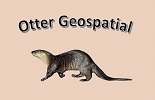Most of us are aware that location can be expressed using something like the Cartesian coordinates that we vaguely remember from high school algebra. If we can get the job done using X’s and Y’s (linear displacements measured in feet or meters), why do we have to mess around with that archaic, unintuitive latitude and longitude stuff ?
Geographic Spatial Information Is Inherently Robust
The mathematical basis of a geographic coordinate system is very sound. Its a case of angular coordinates being used to pinpoint locations on a spheroidal surface – exactly what the solid geometry gods intended. The inherent robustness of geographic data is sufficient reason to give it the edge for the data recording and data storing phases of a project.
Geographic Spatial Information Can Be Hard To Work With
More often than not, the data gathering and data storage phases of a project are just the beginning. At some point a project moves into the analysis and reporting phases, which usually involve calculating distances and areas. When that happens, there are some serious disadvantages to working with geographic data:
- To render the data in a paper map or on a computer screen, the image has to be “rubber-sheeted” so that the meridians are parallel to one another. This introduces distortion in the form of extreme east-west elongation. The only way to display unprojected data without distortion is with a spherical computer screen (or maybe as a hologram).
- The east-west elongation described above increases as one moves north or south from the Equator. And why would we want to measure distance between points in degrees anyway.
Conclusions
It’s not a “one or the other” proposition. Practitioners of geospatial technology need to be fluent in both geographic and projected coordinate systems and to know when and how to switch between them. It’s also a good idea to memorize some frequently used conversion factors:
- Earth circumference (360°) ~ 40,000 kilometers
- 1 degree of latitude ~ 111 kilometers (69 mi)
- 7½ minutes of latitude ~ 14 kilometers (8.6 mi) – this number is significant because the map tiling scheme for USGS topo maps is based on 7½ minute quadrangles.
- 1 minute of latitude ~ 1850 meters (1.15 mi)
- 1 second of latitude ~ 31 meters (102 ft)
- .00001 degrees of latitude ~ 1.11 meters (3ft 8in) – this number is significant because most natural resources work uses coordinates computed to five decimal places

Comments are closed.